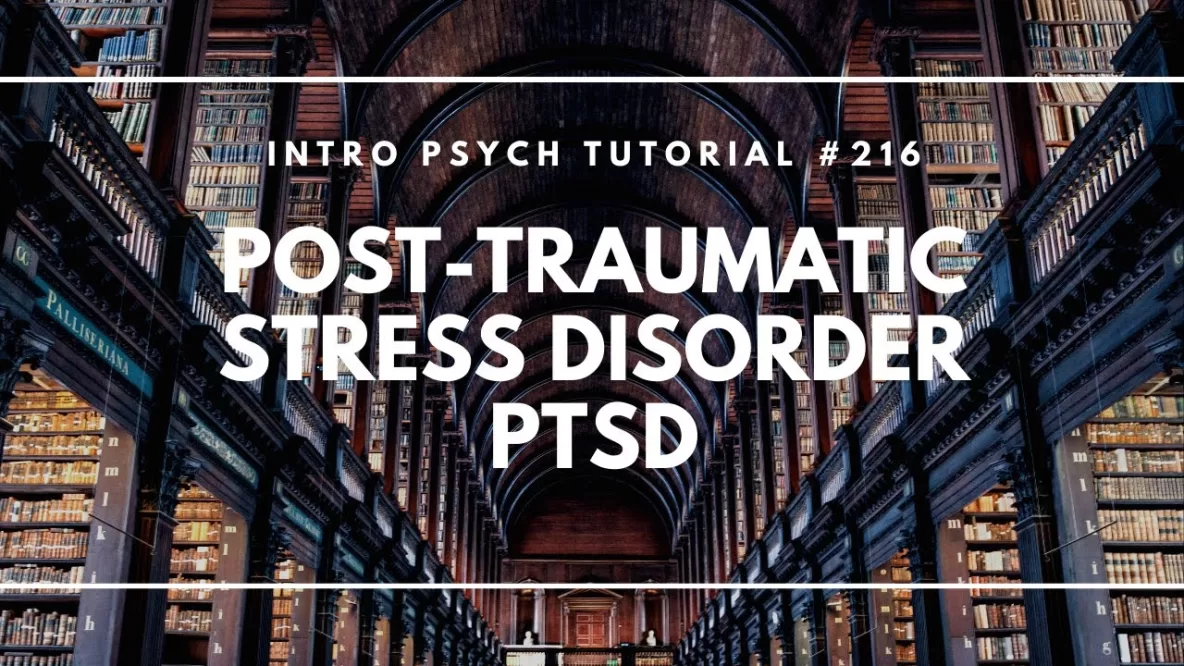In this video I briefly describe the symptoms of post-traumatic stress disorder, the people most often affected by it, and research on potential risk factors for the development of PTSD, including hippocampal volume.
Gilbertson et al (2002) – Smaller hippocampal volume predicts pathologic vulnerability to psychological trauma: http://www.spl.harvard.edu/archive/sp…
Bremner et al (1995) MRI-Based measurement of hippocampal volume in patients with combat-related post-traumatic stress disorder: https://www.ncbi.nlm.nih.gov/pmc/arti…
Video Transcript
Hi, I’m Michael Corayer and this is Psych Exam Review. In this video we’re going to look at a psychological disorder that’s associated with stress and this is post-traumatic stress disorder or PTSD. And it’s important to remember that these videos are for educational purposes; they’re to help you understand things like psychological disorders but they’re not intended to be used for the diagnosis or treatment of disorders.
So in post-traumatic stress disorder we can categorize the symptoms into four main types and these relate to intrusive thoughts, heightened physiological arousal, avoidance, and negative mood and cognition. So symptoms related to intrusive thoughts include things like memories, nightmares, and flashbacks of traumatic events and a flashback refers to an episode where the person feels that they’re reliving this traumatic event or experience. Symptoms related to heightened physiological arousal are things like hyper-vigilance, sleep disturbance, and an increased startle response. And then symptoms related to avoidance refer to the avoidance of memories, thoughts, feelings, or situations that are related to the trauma that the person has suffered. And lastly we have symptoms related to negative mood and cognition and these refer to symptoms like emotional numbing, feelings of guilt, problems with memory and concentration, and suicidal thoughts. In order to be diagnosed these symptoms must persist for at least one month.
Now historically PTSD has been associated with combat; it’s been referred to by other names like “shell shock” during World War I, or “combat fatigue” during World War II and it’s often associated with being suffered by victims, witnesses, and perpetrators of acts of war. But PTSD also occurs in response to other traumatic events; it’s not just about war. So it can happen to people involved in assault, domestic abuse, rape, hostage situations, and natural disasters, and it’s not just victims of these traumatic events but also the people who respond to these events. So that includes people like police officers, firefighters, emergency response teams, and health workers who have to confront these traumatic events and situations. And not everybody who confronts these types of stressors will develop PTSD. So what other risk factors are relevant?
Well some other risk factors that relate to the development of PTSD in response to trauma are being from a low socioeconomic status, having a pre-existing mental disorder, suffering from prior abuse, or having low social support. There are also some physiological risk factors and one that was identified by Mark Gilbertson and colleagues is the volume of the hippocampus. So they looked at sets of monozygotic twins, identical twins, and they saw that in situations where one twin saw combat and the other didn’t, if the twin that saw combat also had smaller hippocampal volume compared to their twin then they were more likely to suffer from PTSD. And this suggests that smaller hippocampal volume is a risk factor for the development of PTSD in response to trauma.
Douglas Bremner and colleagues, however, found that PTSD might shrink the volume of the hippocampus and this would suggest that it’s a consequence of suffering from PTSD; that the hippocampus shrinks. This is something that could be in response to the severe stress of PTSD so we might think of smaller hippocampal volume as being a risk factor as well as a consequence of suffering from PTSD.
Now one thing that is somewhat unexpected is that people who suffer from PTSD tend to show lower levels of glucocorticoids in their bloodstreams and one way this might be explained is that people who suffer from PTSD have greater sensitivity to these stress hormones, these glucocorticoids. And so it might be the case that they’re more sensitive to the stress response and as a result when they’re confronted by an extreme stressor or a very traumatic event that their heightened sensitivity relates to the development of PTSD.
Now development of PTSD is also associated with increased risk of other diseases like heart disease and asthma and this is not too surprising because these are disorders that are also associated with stress, and about 80% of the people who suffer from PTSD will also meet the criteria for another psychological disorder, and that’s something that we’ll look at in more detail in the next unit when we look at psychological disorders.
Okay, I hope you found this helpful, if so, please like the video and subscribe to the channel for more. Thanks for watching!


One Comment on “Post-Traumatic Stress Disorder – PTSD”
Pingback: Trauma & Stressor Related Disorders | Psych Exam Review